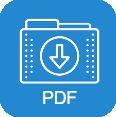Bearing maintenance part 1
1, regular inspection
In order to fully utilize the bearings and maintain their proper performance for a long time, regular maintenance (regular inspection) must be performed. Through proper periodic inspections, early detection of failures and prevention of accidents are important to improve productivity and economy.
1.1 cleaning
When the bearing is removed and inspected, the appearance record is first recorded by photography. Also, verify the amount of lubricant remaining and sample the lubricant before cleaning the bearings.
a. The cleaning of the bearing is carried out by rough washing and fine washing, and a metal mesh frame can be placed on the bottom of the used container.
b. When rough washing, remove the grease or adhesive with a brush or the like in the oil. At this time, if the bearing is rotated in the oil, be careful that the rolling surface will be damaged by foreign matter or the like.
c. When washing finely, slowly rotate the bearing in the oil and carry out it carefully.
The cleaning agent generally used is a neutral non-aqueous diesel oil or kerosene, and a warm alkali liquid or the like is sometimes used as needed. Regardless of which cleaning agent is used, it is often filtered and kept clean.
Immediately after cleaning, apply anti-rust oil or anti-rust grease to the bearing.
1.2 Inspection and judgment
1.2.1 Bearing fault identification method
It is important to improve the productivity and economy by identifying or predicting the failure of the bearing in operation without disassembly inspection. The main methods of identification are as follows:
a. Identify by sound
It takes a lot of experience to identify by sound. Must be fully trained to be able to identify bearing sounds and non-bearing sounds. To this end, the work should be carried out by a dedicated person. The sound of the bearing can be clearly heard by attaching a listener or a listening stick to the housing.
b. Identification by operating temperature
This method is a comparative identification method and is limited to occasions where the operating state does not change much. For this purpose, continuous recording of the temperature must be carried out. In the event of a fault, not only does the temperature rise, but irregular changes can occur.
c. Identification by the state of the lubricant
Sampling analysis of the lubricant is judged by whether or not the degree of contamination is mixed with foreign matter or metal powder. This method is particularly effective for bearings or large bearings that cannot be observed close.
1.2.2 Inspection of bearings
The equipment is inspected regularly, the operation inspection and the bearings removed during the replacement of the peripheral parts are inspected, and the second time is judged whether it can be used again or the use condition is better or worse. Carefully investigate and record the removed bearings and appearance. In order to clarify and investigate the remaining amount of lubricant, the bearings should be cleaned well after sampling.
Next, check the condition of the raceway surface, the rolling surface and the mating surface, and the wear state of the cage, etc., for damage and abnormality.
To determine whether the bearing can be used again, it is necessary to consider the degree of bearing damage, machine performance, importance, operating conditions, inspection cycle, etc. If the bearing is found to be damaged or abnormal, the contents of the injury section will be identified and the countermeasures will be developed. In addition, the inspection results, if there are the following defects, the bearing can no longer be used, need to replace the new bearing.
a. Cracks and fragments appear in any of the inner and outer rings, rolling elements, and cages.
b. Any one of the inner and outer rings and the rolling elements are peeled off.
c. The raceway surface, ribs, and rolling elements are significantly khocked.
d. The cage is worn out or the rivets are loose.
e. The raceway surface, rolling elements are rusted and flawed.
f. There are significant indentations and marks on the rolling surface and rolling elements.
g. Creep on the inner diameter of the inner ring or the outer diameter of the outer ring.
h. Superheated and discolored.
i. Grease seal bearing seals and dust caps are damaged.



 English
English Español
Español Deutsch
Deutsch
















